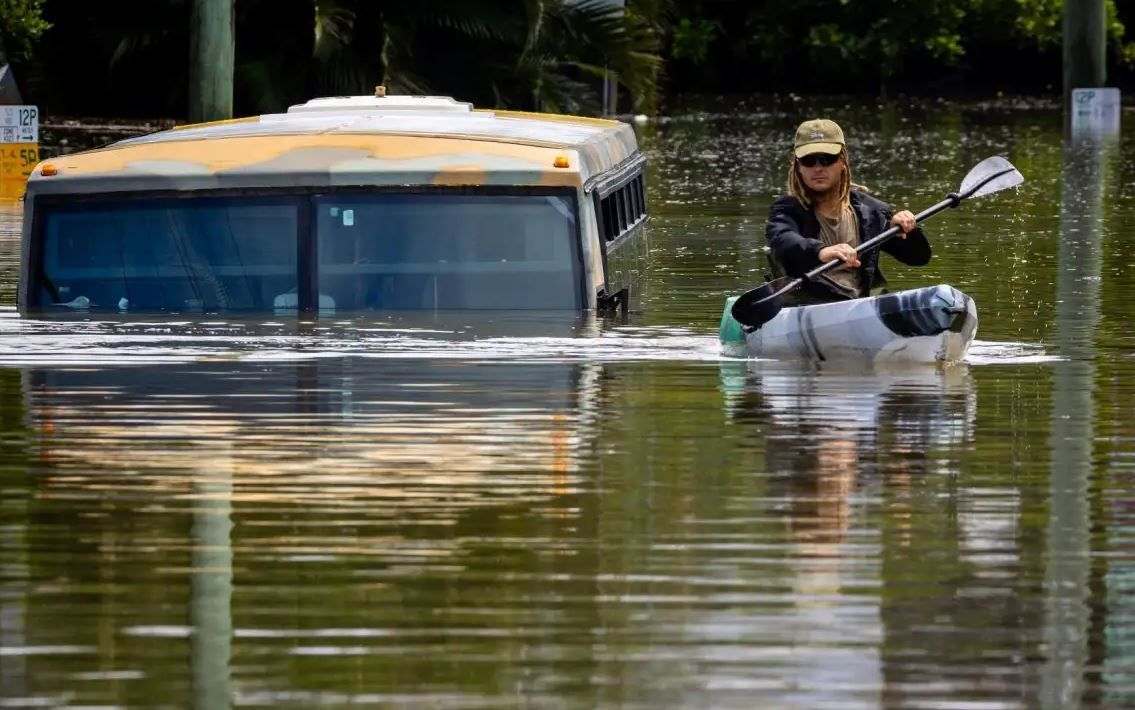More than 50,000 people have been affected by flooding in and around Australia’s biggest city, authorities said Tuesday.
According to State Emergency Service manager Ashley Sullivan, emergency response teams in the Sydney region rescued 100 persons stuck in automobiles on flooded roads or in flooded houses over the course of one night.
A fourth flood emergency in 16 months has hit portions of the metropolis of 5 million people after days of severe rain forced dams to overflow and streams to breach their banks.
New South Wales Premier Dominic Perrottet stated that 50,000 people have received evacuation orders and warnings to prepare to leave their homes, up from 32,000 on Monday.
“We’re still in the middle of this. Everywhere you are, please don’t get complacent. If you’re going to be driving on our roads, please use caution.
To aid flood victims in New South Wales, the New South Wales State Government declared a disaster in 23 local government districts overnight.
By the fourth day of the flooding crisis, no one had died or been seriously injured, thanks to the competence and dedication of rescue workers.
More than 17% of Sydney’s annual rainfall, Bureau of Meteorology meteorologist Jonathan How said, was dumped on parts of southern Sydney in only 24 hours.
On Tuesday, severe rain warnings were in effect for parts of Sydney’s eastern suburbs. There were additional warnings for the coast north of Sydney, as well as for the Hunter Valley.
Flooding was most severe in the Hawkesbury-Nepean river system, which runs through Sydney’s northern and western outskirts.
By tomorrow afternoon, the weather should be generally dry, but “we are alerting people that these floods will stay quite high even after the rain has ceased,” How added.
It rained heavily overnight, and some rivers are cresting a second time because of it. It will take at least a week before you start to see the floods recede,” How said.
They were shocked by how quickly and often their neighbourhood was flooded in Lansvale, a suburb in southwest Sydney.
Lansvale resident Terry told Australian Broadcasting Corp. television that his house had been flooded four times this year after it had been inundated twice before in 1986 and 1988.
Towing a stranded cargo ship with 21 crew members to open water proved impossible due to the unpredictable weather and treacherous waves off the coast of New South Wales.
After departing Wollongong, a port south of Sydney, on Monday morning, the ship ran out of power and was at danger of being stranded by surges up to 8 metres high and winds gusting to 30 knots against cliffs.
A towline broke in an 11-meter wave late Monday, Port Authority chief executive Philip Holliday said, ending an effort to tow the ship into the open ocean.
Two anchors and two tugboats were used to keep the ship anchored farther from the shore than it had been on Monday. To begin with, the ship’s crew had hoped to fix their engine while at sea. When the weather and seas calmed, as early as Wednesday, the revised plan called for towing the ship to Sydney.
He remarked, “We’re in a better situation now than we were yesterday.
The brave actions of the tugboat personnel to salvage the ship on Monday was lauded by Perrottet.
For their bravery, I would want to congratulate the personnel who worked yesterday night in extraordinarily dangerous situations,” he said.
